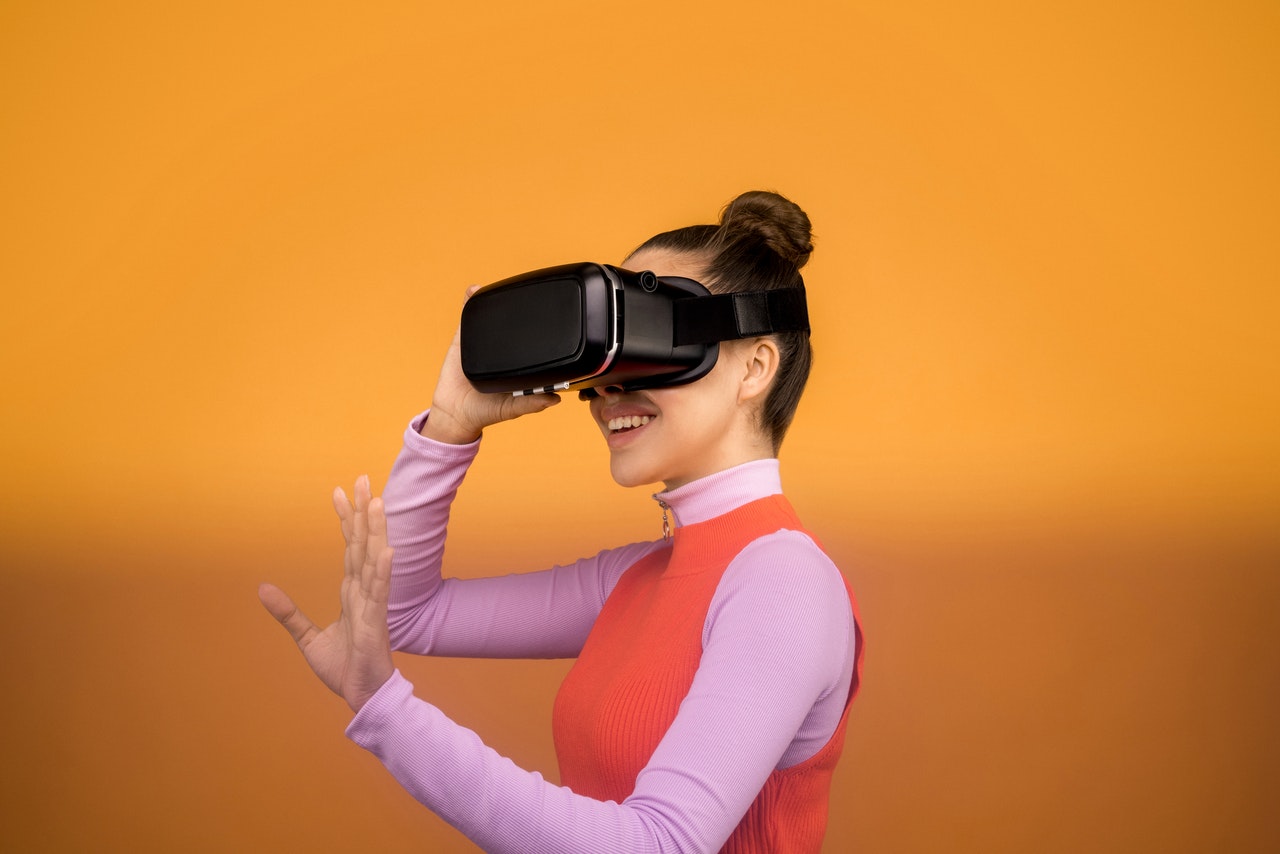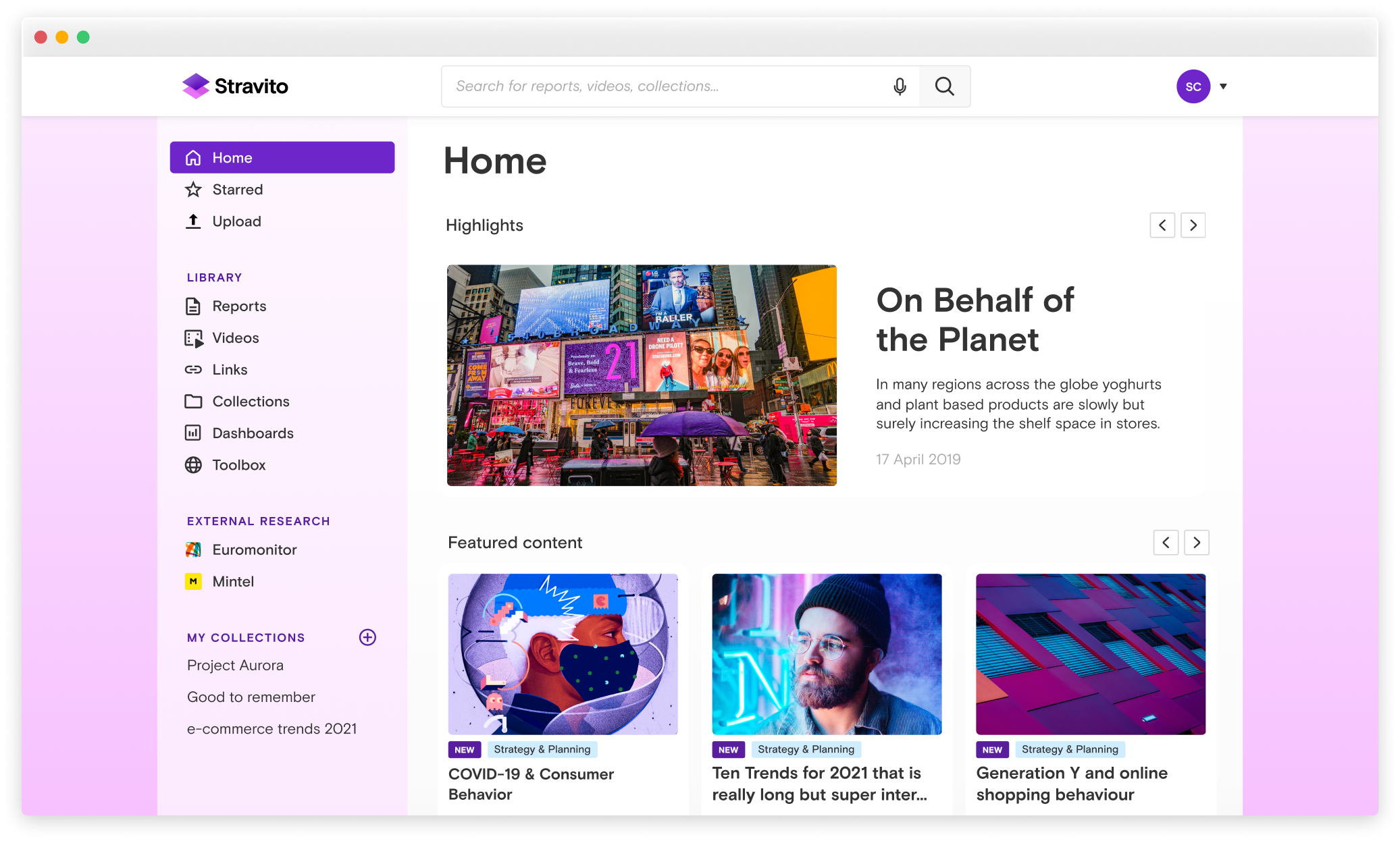The Future of Digital Marketing

What is the future of digital marketing?
Contextual marketing, affinity marketing, growth hacking, immersive techniques and micro-influencers. With new marketing buzzwords popping up on an almost daily basis, one thing is sure: The rate of change will only continue to accelerate. And while some fundamental marketing methods and formulas like AIDA (Attention, Interest, Desire, Action) and PAS (Pain, Agitate, Solution) have been proven to work, and will continue to be of use, how you apply them will only get more diverse.
Because what will continue to change is the technology available to insights teams, marketing teams, as well as consumers.
For insights and marketing teams, this means the emergence of more powerful tools to understand and reach consumers.
For consumers, it means shifting expectations.
In this article, we’ll explore some of the different technologies and trends that will have major impacts on digital marketing in the months and years to come.
AI in digital marketing

AI is claimed to be one of the biggest commercial opportunity for industries at the moment, and will likely keep that spot for the foreseeable future. AI usage in digital marketing has skyrocketed and turned into a $1.62 billion industry. (According to a recent report from PwC, Artificial Intelligence will create a 14.5% boost in GDP in North America before 2030.)
Latecomers to the AI party will suffer a serious competitive disadvantage relative to their competitors in the years to come.
Therefore, digital marketers and consumer insight teams that want to be at the top of their game now and in the future should make themselves familiar with Artificial Intelligence-enabled solutions. Below, we’ll explore some examples of these tools:
Chatbots
Automation is not new in the digital marketing industry; looking back to the 1980s when CRM platforms were the latest trend. It then developed between the early 1990s and the middle of the 2000s when things changed again with the explosive growth of email marketing. This revolutionized the marketing automation industry which was followed by the rise of SaaS, or Software-as-a-Service (as opposed to locally installed on-premise solutions).
Chatbots provide responses to inquiries as messages on websites, often using AI to determine responses. Also known as messenger bots, most chatbots can execute either audio or text conversations.
Ordinarily, what chatbots provide is customer service. But for insight or marketing teams, this has proven a golden opportunity to gather consumer feedback and data. Through customer service bots, you can gather data to learn their behaviors and preferences, while delivering effective and efficient service at a low cost thanks to automation.
Chatbots can also help you to close sales that might otherwise pass you by. About 56% of online shoppers prefer to send instant messages rather than call customer service. Customers are ready to move on to the next available option if you are unable to quickly provide answers to their questions about your product.
AI-powered insights tools
In order to stay ahead and develop successful marketing, branding and product development programs, marketing and insights teams alike should make use of next-gen insights management platforms when planning new programs.
For example, a tool like Stravito uses AI and machine learning to automatically index and categorize research reports. This makes it possible to quickly search for relevant consumer insights and trends, and apply them in each new project.
The benefits to this sort of AI-powered technology are two-fold. First, the ability to leverage more consumer insights will improve the experiences consumers have with your brands, products, and campaigns, making them more likely to buy your products.
Second, it makes it easier for marketing and insights teams to do their jobs well, by removing the frustrations related to accessing, sharing, and searching for information and insights.
Since AI emerged as a workplace technology, there have been a variety of theories about how it will impact professionals. One concern has been that AI will make the work done by humans redundant, and there is actually some truth to that. But in most cases, it’s beneficial – AI will take over the repetitive, busy tasks that often prevent deeper, more meaningful work.
Marketing automation tools
Marketing automation tools offer an additional route for improving the way you’re able to understand and interact with your customers, and they often use some form of AI to deliver their wide range of features.
Below we explore some of the most common options.
Adobe Marketo
Adobe Marketo is one of the most popular marketing automation tools out there, and it isn’t famous by chance. It is great for companies that want to make use of the advanced functionality of the system. There won’t be a need for switching over all your data and campaigns in the future.
Marketing Nation is a great resource for newbies and that has led to a very large and effective knowledge base. Results are guaranteed when you make use of its various components for your marketing automation.
Customer.io
Customer.io is an automated messaging platform for tech-savvy marketers who want more control and flexibility to craft and send data-driven emails, push notifications, and SMS messages.
With an attractive and fast user interface, Customer.io has firmly planted its root as one of the best in the digital marketing automation niche.
Eloqua
Oracle’s marketing solution Eloqua provides a fantastic level of service. This marketing automation tool lets you create more closed-loop marketing and sales activities and lets you manage cross-channel marketing campaigns that nurture leads across each stage of the buying process.
Eloqua further offers campaign design, advanced lead scoring, real-time firmographic data, and integrated sales tools.
Future digital marketing trends
Next, let's take a look at trends that are starting to gain traction in digital marketing. These trends will likely shape how digital marketers go about their business in the near future.
Personalization
The Digital Revolution has allowed for a massive increase in personalization efforts, something that's come to be expected by consumers. Artificial intelligence (AI), machine learning, data analytics, and cloud solutions all have a hand in how aspects of this marketing strategy have evolved.
Nowadays, marketers have to up their game to keep up with this trend. Personalization has opened up a whole new world of opportunities and will only get more important in the future because time and time again it's been proven: personalization delivers results.
Users get frustrated when they come across an ad that doesn’t relate to them. 71% of customers only care about ads tailored to their needs and interests.
Take Spotify for example. They recommend music based on the songs you listen to. This keeps consumers glued to their devices and unable to leave your services.
Creative content
With an overwhelming amount of advertising bombarding consumers everyday, brands need to have data-backed strategies for cutting through the noise.
A 2020 meta-study published in the Journal of Marketing confirmed this idea. By examining over 90 data sets, the researchers found that creative ads have a positive impact on a variety of key aspects of consumer responses, such as:
- positive affect
- perceived humor
- attention
- perceived brand quality
- perceived credibility
- brand attitude
- purchase intention
They also explored the importance of two core dimensions of creativity: originality and appropriateness. Originality encompasses the novelty or newness aspect of creativity, while appropriateness encapsulates the relevance aspect.
Getting creativity right means achieving both dimensions, and this all comes down to having a deep understanding of your consumers and their perceptions of your brand. (This deep consumer understanding is something a purpose-built platform like Stravito can help you accomplish.)
Diversification
In the digital marketing world, there’s no one-size-fits-all strategy for businesses. With a diverse number of audiences available for you to reach out to, you can now use specialized tools to tailor your content to suit each category of customers in different ways.
When paired with effective insights management, diversification allows you to follow the process to analyze data, test and optimize marketing strategies based on target-audience preferences, socialize smartly, and in the long-term create a balance that will assist your business to develop positive results, all the while keeping up with ever-evolving requirements from diverse audiences.
Featured snippets
Short snippets of text that appear at the top of Google’s search results are called featured snippets. It comprises content pulled automatically from web pages in Google’s index.
A Google user doesn’t need to click any of the links provided by the search result because featured snippets results are precise and short.
Featured snippets contribute to a shift in consumer behavior and may have a significant impact on how digital marketing will turn out in the future. Featured snippets have made businesses proffer solutions to customers as quickly as possible.
Ordinarily, in SEO, the number one result on a search engine query is the most coveted spot. But what’s most important these days is landing the featured snippet spot.
Featured Snippets can be in the form of listicles, definitions, tables, or how-to guides.
Voice search optimization

A few years ago, ComScore made a prediction that soon 50% of all Google searches in the USA would be conducted by voice searches, with 30% of those searches conducted without a screen.
As more households continue to adopt IoT technologies like personal assistants and smart speakers, the figure is bound to rise in the coming years.
This has great implications for digital marketers, as regular search engine optimization, SEO, and Voice-activated SEO don’t work the same way. Audio searches focus more on long-tail keywords (niche-specific three or more words long), FAQ sections, and on-page SEO optimization for mobile devices.
Page speed
Due to the shift in Google’s approach towards paid and organic results, page speed should now influence every on-site tactic, metric, and strategy that marketers use to make the site infrastructure appealing to potential customers.
Improving page speed increases your chances of driving more traffic to your site. Every single user that comes across your website is influenced negatively or positively by how well your website performs.
A lower bounce rate shows user susceptibility towards your site and will enable search engines to rank you accordingly.
Running your website through a test tool is the first step in identifying your page speed and what you can do to affect it. User experience, design, and front-end code are some aspects to consider in improving your site’s speed.
What the future holds for digital marketing jobs
Today, successful digital marketing requires diverse teams with access to the right technology and who leverage consumer insights to create products, brands, and campaigns that truly resonate.
In the coming section, we’ll explore a few digital marketing roles and how current trends might impact their future.
Digital Marketing Manager
A digital marketing manager designs, builds and maintains marketing tools and strategies. They’re held accountable for coming up with concepts to run and optimize digital marketing campaigns.
Digital marketing managers may have to work closely with other teams, such as consumer insight or user experience teams and strategize on how to use consumer data to develop terrific ideas to the best of the company’s interests.
Content Strategist
Content is king, and there are several reasons for this. Great content focuses on creating solutions for customers. It is more about the needs of the consumer than it is about you.
In a digital world where everyone can easily create something, you have to stand out by creating creative campaigns that will grab your customer’s attention.
The function of a content strategist will go beyond overseeing content strategies. To guarantee effective content processes, a content strategist will have to collaborate with other content creators to come up with tailored ideas that will suit the needs of the target audience.
SEO and SEM Specialist
A search engine optimization or marketing specialist is tasked with making the company’s products stay relevant and as easy to access as possible across search engines. An SEO specialist monitors unpaid efforts while SEM specialist monitors all paid campaigns and tools used for ad displays on Google.
SEO specialists have to pay a lot of attention to evolving market trends, search algorithm updates and the latest best practices for how to use keyword research to help the website content rank highly on search engines.
Email Marketing Specialist
The primary responsibility of an email marketing specialist is to run result-oriented email marketing campaigns. While automation has reshaped the face of modern marketing, email marketing specialists are still as important as ever.
Implementing machine learning algorithms along with your email marketing campaigns can uncover valuable content distribution procedures that help to ensure individualized preferences are met.
Businesses that use AI to steer their marketing activities are more likely to see an increase in their ROI than those that don’t. Companies like Amazon generate about 30% of their revenue from their recommendation engine alone.
The modern email marketing specialist is expected to use data such as purchase history, location, and other behavior signals to create patterns that can form the foundation of personalized marketing campaigns.
Social Media Manager
Social media managers are primarily responsible for managing social media accounts. But their job also goes a lot deeper than that and will continue to do so.
Customers are many times at the forefront of marketing in these present times, especially in social channels where live interactions are often part of the creative ads themselves. A social media manager must be able to interact positively through conversations and make every customer feel special to create a certain level of brand connectedness.
Social media managers also have to team up with content strategists and creative content teams to develop the type of content that is suitable for each social media platform.
SEO metrics, crafting attention-grabbing ad copy, traffic analytics, and inciting emotions through witty social banter from audiences is also an added advantage in the social media manager tool kit.
Consumer Insights Manager
Consumer insights managers are an essential part of a successful digital marketing team. As the ones who commission, analyze, and curate insights that drive the business forward, their work on consumer understanding provides the foundation for products, campaigns, and brands that resonate.
Historically, the potential of consumer insights teams has been limited by the challenges posed by managing and sharing knowledge insights in a large organization. Instead of working strategically with insights, a lot of time ends up being devoted to searching for and sharing requested information with stakeholders.
However, user-friendly insights platforms like Stravito are changing this dynamic, and turning the former gatekeepers of insights into enablers of a consumer centric organization; with self-service access to insights for stakeholders and more time for meaningful insights work.
Virtual reality, augmented reality, and the future of digital marketing
Virtual Reality (VR)
Immersive technologies like Virtual and Augmented Reality promise a breath of fresh air with unique qualities that by some are seen as much more exciting than traditional marketing strategies. Embracing the potentials of new technologies to create brand awareness is the rising trend in the world of digital marketing.
VR works on stimulation. It uses computer-generated experiences to immerse a user in an artificial environment where interaction can take place.
Several prominent companies are already tapping into the power of VR technologies to strengthen their brand and create ways for customers to better enjoy their product.
The New York Times for example has a VR editor that turns New York Times articles into immersive video formats that can be assessed with VR gadgets like headsets and the likes.
Opportunities like the support of 360-degree videos are impossible to ignore, which is why major news outlets like the New York Times and USA Today have also dished out VR content since 2014.
Companies like Magic Leap (valued at $6 billion) also provide an augmented reality platform focused on providing VR solutions to businesses, while Niantic, the company that launched Pokemon Go in 2016, has become a top leader in augmented reality in that short 5 year time span. The business is even valued at over $4 billion.
Augmented Reality (AR)
Augmented Reality on the other hand focuses on creating interactions between the actual world and superimposed computer-generated graphics. Users can analyze real-time experiences with virtual information.
Unlike VR, which requires external devices for its operation, AR users can make use of their smartphone or tablet to experience digital elements in the actual world.
AR technology is a fantastic way to generate higher revenues through product visualization. Digital marketing practices that can get customers excited will ultimately boost the effectiveness of your digital marketing strategy.
How immersive technology can improve digital marketing
Promote brand intimacy
Customers can get the first-hand experience of your products from the comfort of their homes with Virtual Reality. Bedrooms, kitchens, and other parts of their homes can be remodeled to their taste.
What makes it more exciting is the unlimited availability of choices, as both children and adults can interact with the remodeled room as if they were standing in it.
Businesses like IKEA optimize AR by creating an app for consumers to preview furniture and interior decorations for their homes – directly from their homes.
Create exciting user experience
In situations where a real demonstration is impractical, VR is there to save the day through hands-on demonstrations of how your products work. Your customers will find themselves experiencing your product directly instead of having to explain it to them.
For example, hotels can provide facility tours, real estate businesses can offer virtual open houses, restaurants can showcase what’s going on in the kitchen, and all a user needs access to is a web-based setup or a VR headset.
Enjoyable product tests
Since the idea is to engage customers with your products, VR can also be used to allow customers to try before they buy.
Companies like Honda allow users to test drive their cars by playing a racing game. The new Honda Civic even came with 360-degree virtual reality content that let viewers check out the interior of the car without entering it.
Digital marketing through gamification
Gamification involves designing elements that will keep customers engaged and yearning for more. This way you give your audience more reasons to stick with your product.
An essential digital marketing technique, gamification can help brands and businesses deliver value to their customers by creating a fun and interactive experience.
Conclusion
In order to stay ahead, those who work with digital marketing in any way must stay on top of the latest industry technology and developments. This is key for ensuring the most effective workflows and also for staying in-touch with the needs and desires of consumers.
But beyond shiny new technologies, the results lie in how you successfully apply them. Deep insights into the consumers you are trying to reach, will unlock what their most valuable applications are. The presence of technologies like AI, VR, and AR will be instrumental in determining the future landscape of digital marketing. But first you need to know: Who will actually be using them?
Related Content

The Role of AI in Decision-Making: Smarter Insights or Faster Mistakes?
Thor Olof Philogène Apr 3, 2025

To Maximize the Value of Your Research, Start with Knowledge Management
Sarah Wiggins Mar 27, 2025



